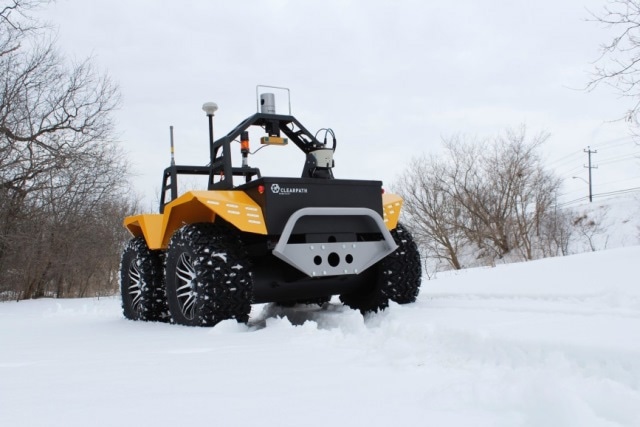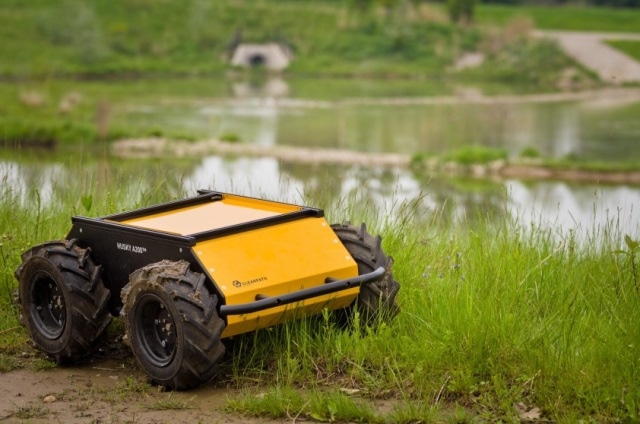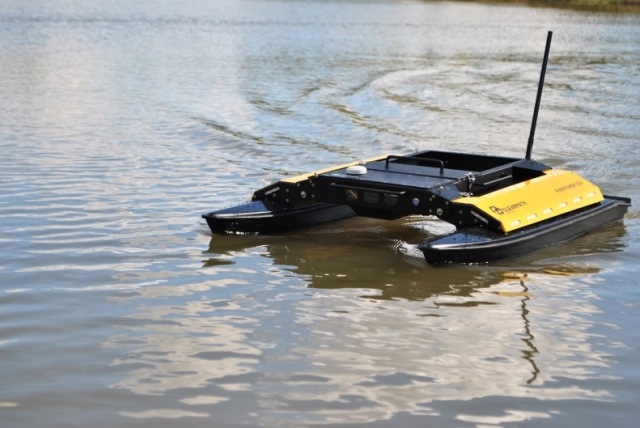
Matthew Rendall, CEO at Clearpath Robotics talks to AZoRobotics about automated robots for the land mining industry.
Can you give me an introduction to Clearpath Robotics?
My partners and I started Clearpath Robotics while we studied engineering at the University of Waterloo (in Canada). We initially focused on developing robots to clear mines in war-torn countries, but the project became much more high risk and costly than we were capable of managing at that point in time. Meanwhile, we realized that as students, we were limited to easy-to-use, reliable autonomous vehicles, so we pivoted from mine clearance and developed autonomous unmanned vehicles geared to help university researchers bring their work to the field faster and cheaper than they could before. Today we’re a global leader in the R&D sector; we’re very fortunate to work with leading researchers around the world.
The team at Clearpath Robotics has recently sponsored a project to develop mobile robots for landmines. Can you discuss the objectives of this project?
In 2011 we established the Partnerbot Grant Program to support university robotics research teams. We gave 10 teams from around the world robotics equipment to pursue their research – collectively, the equipment was valued at $100,000. University of Coimbra’s Institute of Systems and Robotics, located in Portugal, was awarded a Husky Unmanned Ground Vehicle and named the winner of the Special Award for Humanitarian Contribution.
The Coimbra team, led by Dr. Lino Marques, set out to accomplish three key tasks with their mobile robot: Perceive terrain characteristics, navigate across the terrain, and utilize the vehicle to detect and localize landmines.
The first round of field tests in 2013 was interrupted due to issues with their custom robotic arm. Once adjustments are in place, a second round of field tests will take place – they’re expecting this to be sometime in the summer of 2014.
How will the application of mobile robots be a direct solution for the minesweeping problems that are still a burden in the land mining industry?
Minesweeping is an extremely dangerous and time-intensive process that’s mainly completed by human operators. According to Dr. Marques’ research, there are 110 million active landmines in the world and an estimated 20 thousand people lose their lives in mine-related accidents each year. If human operators were to continue removing landmines, it would take about a thousand years to remove them all. Using robots to do the work, however, is more efficient and – what’s paramount – removes human operators from the extremely dangerous situation. To this regard, autonomous robotic solutions are directly impacting human lives.
What are your main products and how are these products helping their corresponding markets?
We design and build three core products including Husky Unmanned Ground Vehicle (our flagship product), Grizzly Robotic Utility Vehicle, and Kingfisher Unmanned Surface Vessel. Our ground vehicles (Husky and Grizzly) are primarily used in mining, military and agricultural research applications while our sea vehicle (Kingfisher) is used for marine research and very recently, was commercialized through Echostream for use of bathymetric surveys.

Grizzly Robotic Utility Vehicle (RUV) is designed for rough, rugged environments.

Husky Unmanned Ground Vehicle (UGV) by Clearpath Robotics.
How do you work with robotic researchers and innovative managers to build world-class autonomous vehicles?
Our business model has always been customer-driven. We often work one-on-one with research teams to understand their project, recognize their needs and determine how we can help them get to the field faster. Each base platform we engineer, such as Husky, Grizzly, or Kingfisher, was born through customer feedback and an iterative process.

Kingfisher Unmanned Surface Vessel (USV) – waterproof autonomous robot.
Additionally, all of our robotic vehicles are designed to be autonomous and compatible with open source software – generally speaking we use the Robot Operating System (ROS). ROS is recognized around the world and allows users to collectively improve and contribute to the software. Just about everything we do is available for the open source community and just as the community does with our software, we take certain elements from the community base to enhance what is there and commercialize it for our customer projects.
How do you ensure minimum risk with your robots?
Our robots are designed for rough, rugged environments so we ensure they’re capable of handling a variety of scenarios by thoroughly testing them here at Clearpath Robotics. We also work very closely with our customers as the project is underway to ensure the vehicles will be an ideal fit for their scope of work.
Because we use open source software on our platforms, the packages have been refined through the online community and our in-house experts. The software is available online so customers can receive updates the moment these are posted.
How do you plan on developing your robotic technology further?
Our number one focus has always been to listen to the customer needs. Just like our other products have been developed from customer feedback and requirements, our future products will be as well. Furthermore, we have a fantastic team at Clearpath who truly are unmanned experts –innovation and creativity are always present in our workplace and it’s the people behind the bots that ignite a lot of ideas for the advancement of existing products and driving ideas for new ones.
Clearpath Robotics is a busy place and there is a lot of exciting stuff coming down the pipes!
Where can we find further information?
More information about our products, our company and career opportunities are available at the Clearpath Robotics website. We’re also very active on social media through Facebook, Twitter, and LinkedIn.
About Matthew Rendall

Matt Rendall is CEO and Co-Founder of Clearpath Robotics where he is responsible for driving the strategic commercialization of industrial telerobotics and autonomous systems, and setting the overarching vision for the Company. Within 36 months of incorporation, Matt led Clearpath Robotics to become a leader in the unmanned systems research and development industry, with a list of international clients including the world’s top research teams.
He began his career by developing and commercializing complex electro-mechanical systems, and held various research and development positions in automation, automotive, and defense industries. Matt holds a Bachelor of Applied Science from the inaugural Mechatronics Engineering class at the University of Waterloo, and a Master's in Business, Entrepreneurship and Technology also from the University of Waterloo. His thought leadership brought Clearpath Robotics early success, along with a variety of accolades including the Ernst & Young Entrepreneur Of The Year 2013 Award for Young Entrepreneur-Ontario, an Edison Award for Kingfisher USV, and the Robotics Business Review Game Changer Award for Grizzly RUV.
Disclaimer: The views expressed here are those of the interviewee and do not necessarily represent the views of AZoM.com Limited (T/A) AZoNetwork, the owner and operator of this website. This disclaimer forms part of the Terms and Conditions of use of this website.